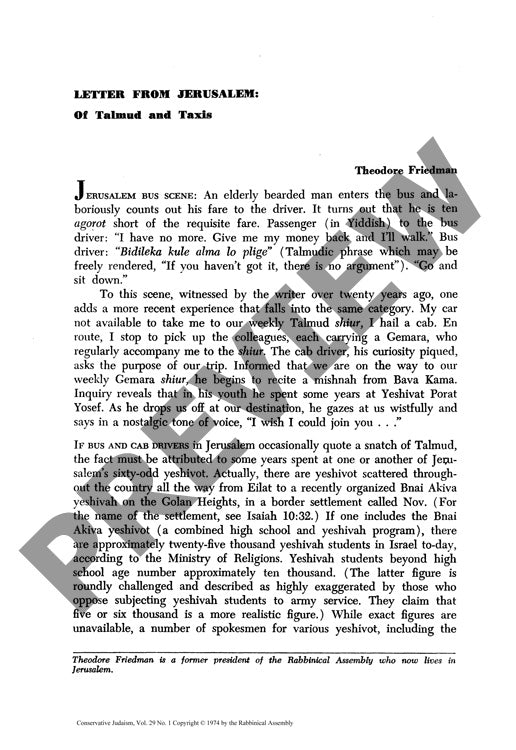Letter from Jerusalem of Talmud and Taxi
Couldn't load pickup availability
This ethnographic study examines the contemporary yeshiva system in Jerusalem and Israel through observational analysis and institutional survey. The methodology combines participant observation, interviews with yeshiva administrators, and analysis of enrollment data from the Ministry of Religions. The research reveals approximately 25,000 yeshiva students nationwide, with 10,000 beyond high school age, representing a steady increase in recent years. The study identifies three distinct federations of yeshivot based on religious and political orientations: Ichud Hayeshivot (anti-Zionist), Mifal Hatorah (Hasidic), and Vaad Hayeshivot (Bnai Akiva type). Curricular analysis demonstrates that Talmudic study dominates across institutions, with minimal critical scholarship and limited inclusion of Jewish philosophical texts. The research documents significant diversity in attitudes toward Zionism and military service, funding mechanisms primarily dependent on foreign contributions and government subsidies, and the unique case of Yeshivat Hatefutsot serving alienated American Jews. Key findings indicate that while Israel maintains a substantial population of Talmudic scholars, this concentration may come at the expense of broader Talmudic literacy in the general population. The study concludes that the current system produces extensive expertise among few rather than basic knowledge among many, potentially limiting the cultural transmission of Talmudic learning.

More Information
-
Physical Description
-
Publication Information
Published 1974
ISBN
-
Publication Credits
Theodore Friedman

